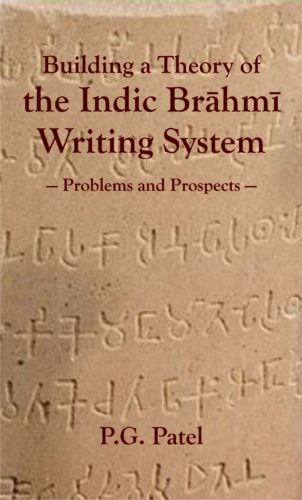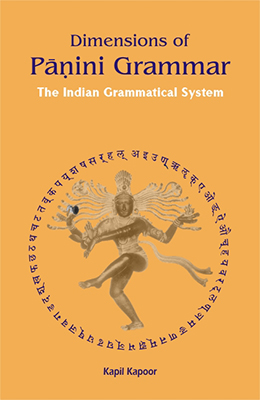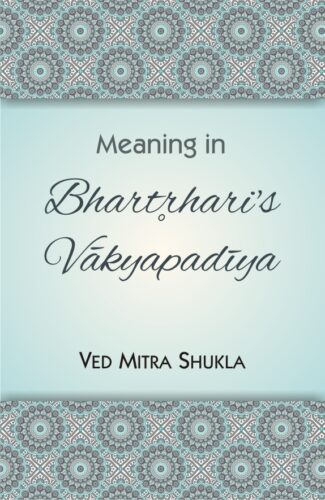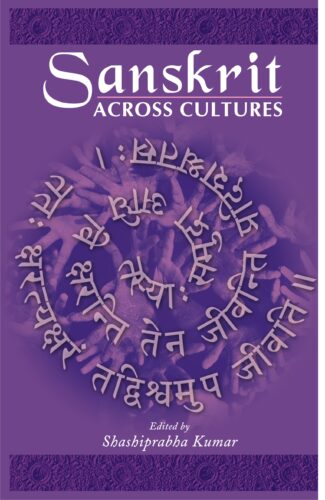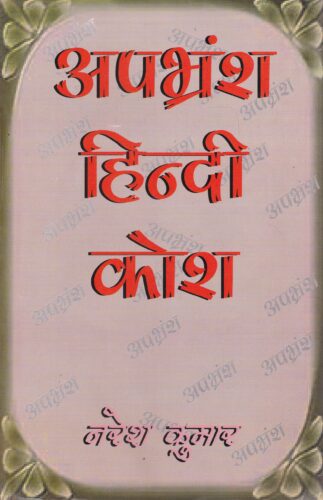

Apbharamsa Hindi Kos...
Apbharamsa Hindi Kosha
Apabhramsa-Hindi-Dictionary by: Naresh KumarThis Dictionary of Hindi Apabhramsa gives in detail the grammatical importance of words, their meanings, correct spellings, the alternate words and their various usages as mentioned by lexicographer Naresh Kumar.
₹1,500.00 Original price was: ₹1,500.00.₹1,350.00Current price is: ₹1,350.00.
ISBN: 9788124601365
Year Of Publication: 1999
Edition: 1st
Pages : xlv, 869
Language : Hindi
Binding : Hardcover
Publisher: D.K. Printworld Pvt. Ltd.
Size: 23 cm.
Weight: 1500
This Dictionary of Hindi Apabhramsa gives in detail the grammatical importance of words, their meanings, correct spellings, the alternate words and their various usages as mentioned by lexicographer Naresh Kumar.

- Sale!Linguistic Traditions of Kashmir by: Mrinal Kaul, Ashok Aklujkar,
₹1,250.00Original price was: ₹1,250.00.₹1,125.00Current price is: ₹1,125.00.The present volume mainly consists of original research papers. It is not a collection or anthology in which specialists of the different aspects of Kashmirian use or study of language were invited to write essays surveying the aspects best known to them or to produce state-of-the-art reports about the scholarly study of the aspects. An effort, however, has been made in the Introduction to provide the general background that a reader may need in order to situate the papers in the proper intellectual and historical context. The Introduction further outlines the themes that could and should be particularly explored to lead us to a fuller and sharper understanding of Kashmir’s analytical engagement with language. The appendices toward the end of the volume then complement the Introduction by presenting objective and practical information about the manuscripts etc. of works in Sanskrit. The volume could connect the results of the work done in the past with the work to be done in the future by adding to knowledge in the present because of the articles it attracted from veteran as well as upcoming researchers. The reader will find here discussions bearing upon texts, as well as discussions bearing upon the authors of texts; discussions devoted to elucidating single passages, as well as discussions exploring instances of intertextuality; and discussions exclusively addressing individual grammars, as well as discussions engaging in the relation of one grammatical school with another.
- Sale!Rated 4.00 out of 5Building a Theory of the Indic Brahmi Writing System by: P.G. Patel
₹400.00Original price was: ₹400.00.₹360.00Current price is: ₹360.00.This book develops a consilience of research and thinking in epigraphy, archaeology, and linguistics on the Indic Brahmi writing system. Its objective is to identify the problems that need to be tackled by anybody who tries to develop a theory of the Brahmi writing system. As for the currently scientifically supported hypothesis that Brahmi originated in Tamil Nadu during the sixth century BCE or earlier, Patel opts for the need to keep this as an idea for the working basket awaiting new archaeological research in the sixth-century Magadha region.
The book deliberates upon how ancient Tamil Nadu was receptive to literacy. The Brahmanical fascination for orality blocked literacy in Vedic India. The brahmanas from north India entered Tamil Nadu only during the third century bce and lived away from residential areas. Tamil Nadu at the time had no caste system. This is reflected in the Sangam literature, which followed historically the grammarian Tolkappiyar. The conditions in Sri Lanka before and after the arrival of Buddhism are noted in relation to the rise of literacy. The relationship between Brahmi in Sri Lanka and Tamil Nadu is highlighted for the purpose of further research. Also noted is the need for research on the differences between Dravidian and northern scripts in the way the aksharas are formed in graphic representation. - Sale!Dimensions of Panini Grammar by: Kapil Kapoor
₹950.00Original price was: ₹950.00.₹855.00Current price is: ₹855.00.Leonard Bloomfield described Panini’s Ashtadhyayi (7th century bc) as ‘one of the greatest monuments of human intelligence.’ It is a complete, explicit and comprehensive grammar of both spoken and textual (compositional) Sanskrit. Most of the reputed and renowned Indian and foreign universities running courses on Indian knowledge systems, study it for its principles of analysis, organization and description. What is of great interest is the theoretical framework that informs this grammar, a framework that has remarkable power to describe human languages, particularly the Indian languages.
Panini is the watershed in the linguistic history of India. Before Panini, there was extensive work in phonetics, in morphology and lexicon (in the patha tradition) and in nirvacana (etymology). There is evidence also of the existence of several schools of grammar. In what is characteristic of the Indian intellectual traditions, Panini distilled the available grammatical knowledge and put it in 32000 syllables — as if, it has been said, an ocean has been accommodated in a cow’s hoof-mark. After Panini, a whole tradition developed and produced rich works by Patanjali, Candrakirti, Jainendra, Bhartrihari, Bhojraja, Hemacandracarya, Bhattoji Dikshita, Nagesha Bhatta and many others. It also inspired work in literature and philosophy and has left its mark on the entire intellectual tradition. In the modern period, there is a spread of Ashtadhyayi studies round the globe and it has proved to be of great interest for the study of knowledge representation in the departments of system sciences.
A comprehensive study of the different dimensions of this wonderful grammar enlarges and alters the conceptual horizons of young minds and of all those who care to be associated with the Indian grammatical systems. This book is a record of that adventure. - Sale!Rated 5.00 out of 5Meaning in Bhartrharis Vakyapadiya by: Ved Mitra Shukla
₹650.00Original price was: ₹650.00.₹585.00Current price is: ₹585.00.The study of grammar and linguistic philosophy had its origin in the Vedic period, at least in the second millennium BCE. The Vakyapadiya of Bhartrhari, an authoritative Sanskrit text written in the fifth century CE, contains reflections on the subject matter of language and grammar, thus the philosophy of language. Interpretation of communication is one of the principal objectives of Bhrtrhari’s philosophy of language. His goal is to interpret the communication of all living things, be it a man or an animal, or a yogi or a baby. Bhartrhari represents a rich tradition of Indian philosophy of language that he inherited from Panini and Patatijali. The West, for all practical purposes, lagged behind in grammar, literary theories, philosophy of language and with the problems of meaning, even at the dawn of the twentieth century, when the Indian Grammarians made penetrating studies on the same even before the common era.
- Sale!Sanskrit Across Cultures by: Shashi Prabha Kumar
₹480.00Original price was: ₹480.00.₹432.00Current price is: ₹432.00.Sanskrit may be said to be one of the oldest extant languages of the Indo-European group of languages. It is hailed as the memory of the human race and its earliest cultural history. No serious study of the world civilization and cultures of different countries will be possible without understanding Sanskrit as it evolved and influenced other languages of the world or bears association with them. This volume has articles that attempt such an understanding of the Sanskrit language. Scholars trace the link of Sanskrit with various countries of the world and their cultures and languages. They throw light on Sanskrit grammar as recorded in Chinese works and contributions of Sanskrit to Chinese linguistics; on the many Sanskrit manuscripts available in Japan; and similarities and regularities in the phonetic system, grammar and vocabulary of Sanskrit and Russian. They view links between Sanskrit and the Slavonic languages, German, English, Persian and the Indonesian languages, examining mutual borrowings. They explain the way translations from one language to another have affected preservation and dissemination of knowledge. The articles, a result of meticulous study and marked by simplicity and clarity in expression, will be interesting and informative to a range of scholars of Indology.




